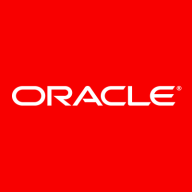

KVM and Oracle VM VirtualBox compete in the virtualization software category. KVM appears to have the upper hand for enterprise environments due to its comprehensive features and performance advantages.
Features: KVM is open-source, allowing extensive customization and integration with other software components. Notably, it offers stability, scalability, and high security, with support for real-time performance crucial for applications requiring minimal latency. Oracle VM VirtualBox is known for its ease of use and versatility, suitable for running multiple operating systems. It supports file sharing between host and guest systems, and provides a lightweight, user-friendly interface.
Room for Improvement: KVM's complexity in initial setup, networking, and management, especially for those less experienced with command-line operations, is frequently mentioned. Enhancements in user-friendliness and documentation would be beneficial. Oracle VM VirtualBox lacks some enterprise-level features such as sophisticated networking options and seamless integration capabilities. Improvements in user interface and expanded feature set for business continuity could enhance its appeal for larger environments.
Ease of Deployment and Customer Service: KVM is favored in private cloud and on-premises environments due to its robust performance and customization, but its reliance on community support often leaves users without immediate technical assistance. Oracle VM VirtualBox benefits from strong community support but also lacks dedicated customer service, presenting challenges for users needing guidance.
Pricing and ROI: Both KVM and Oracle VM VirtualBox are open-source and free to use, providing significant cost savings compared to proprietary solutions like VMware. KVM may incur costs if enterprise support is needed, offering better pricing options for critical environments. VirtualBox offers a free solution effective for academic and personal use, while incurring costs for enterprise use. Both solutions result in cost savings due to their open-source nature.
KVM definitely saves costs since it is open-source and does not obligate us to pay for licenses as necessary with other virtualization solutions.
I did not perform any long-term stress tests, just for a couple of hours or days on every application.
Paid support is also obtainable from companies like Red Hat for more critical issues.
Their forum and documentation is more than enough for technical support.
The snapshot functionality in Oracle VM VirtualBox is effective for management purposes.
In comparison to VMware, which offers a more balanced set of management features, KVM could improve in terms of user-friendly tooling.
Having some kind of API to maintain Oracle VM VirtualBox would be beneficial.
Compared to VMware and Microsoft, KVM offers better pricing and licensing options.
In the enterprise scenario, all software solutions, including Oracle VM VirtualBox, are expensive.
The most valuable feature of KVM is its superior real-time performance, which results in lower latency compared to alternatives like VMware and Microsoft.
The guest OS compatibility was tremendous because I used Oracle VM VirtualBox on Linux and ran Windows applications on top of that, working seamlessly.
Its snapshot functionality helps with backup management.
| Product | Market Share (%) |
|---|---|
| KVM | 9.6% |
| Oracle VM VirtualBox | 6.0% |
| Other | 84.4% |


| Company Size | Count |
|---|---|
| Small Business | 22 |
| Midsize Enterprise | 9 |
| Large Enterprise | 14 |
| Company Size | Count |
|---|---|
| Small Business | 32 |
| Midsize Enterprise | 20 |
| Large Enterprise | 17 |
KVM stands for Kernel-based Virtual Machine, which is an open-source virtualization technology that is embedded in Linux. KVM allows users to seamlessly transform their Linux system into a hypervisor that, in turn, will enable a host machine to run numerous, isolated virtual environments or virtual machines (VMs).
KVM is part of Linux. Users with Linux 2.6.20 or newer already have KVM. As KVM is already a component of the current Linux code, it automatically improves with every new Linux fix, feature, or upgrade. So KVM users are always current and up to date.
KVM automatically transforms Linux to a type -1 (bare-metal) hypervisor. All hypervisors need operating system components, such as a process scheduler, I/O stack, device drivers, memory manager, and more, to run a VM. KVM already has these components embedded, as it is part of the Linux kernel. Each VM is generated as a basic Linux proces,s which is maintained by the standard Linux scheduler, with dedicated hardware such as a graphics adapter, memory, disks, network card, and CPUs.
KVM Key Features:
KVM has many valuable key features. Some of its most useful features include:
Reviews from Real Users
“The most helpful aspect of KVM is the fact that the interface is so minimal. It includes just what you need to set up the VMs and manage them, and it's very simple to do so. KVM, as a native virtualization solution, is a complete and fully adequate system for small businesses that need to reduce costs, and also to make maintenance easier. “ - Georges E., Business Engineer and Consultant at All-Tech
“The most valuable feature of KVM is the hypervisor environment and how we can configure it with ease. Additionally, the interface is intuitive.” Sonu S., Senior Solution Architect at Micro Focus
Oracle VM VirtualBox is a robust AMD64/Intel64 and x86 next-generation virtualization solution that functions well for home use and is also powerful enough to handle the needs of a busy enterprise organization. This professional solution is open source and provides super-fast high performance in addition to many outstanding value-added features. VirtualBox functions effectively on Windows, macOS, Solaris, Linux, and more. Users can benefit from VirtualBox's dedication to continually developing the product and providing continual progressive updates and releases. The solution is supported by a trusted dedicated professional community and is backed by Oracle, which guarantees that the product is able to consistently meet and exceed quality controls and protocols at all times.
Oracle VM VirtualBox Features
Oracle VM Virtual Box provides many value-added features. Some of these features include:
Reviews from Real Users
“Oracle VM VirtualBox is easy to use and does not require much training. It uses fewer resources. Teams using new operating system releases can quickly test and implement. This would make the development of new software releases faster and easier. It also helps users to write the program, test, and support it on multiple platforms. It has a good community as it is open-source.” - Satishbabu G., Oracle ACE
“It is easy to use and does not require complex knowledge. It uses less resources, which is a requirement as it is used to onboard hardware with very little resources available.” - A PeerSpot user who is an IT Architect - AI at CGI
We monitor all Server Virtualization Software reviews to prevent fraudulent reviews and keep review quality high. We do not post reviews by company employees or direct competitors. We validate each review for authenticity via cross-reference with LinkedIn, and personal follow-up with the reviewer when necessary.